Pearl Zhu's Blog, page 1307
August 15, 2016
“Talent Master” Book Introduction Chapter 3 Digital Creativity
 Digital is the age of innovation. Human creativity is perhaps far more advanced than what can be achieved by a machine so far. Our thoughts, “gut feeling,” “intuition,” “insight,” and many more complex aspects of our consciousness and awareness greatly enhance our thinking and learning creativity. Creativity is #1 wanted quality for digital leaders and professionals today. All of us have a creative or artistic side, while also having a curious and scientific side to us. Creativity is, by nature, unique to each person. There is no template which you can apply and have a creative workforce an as overnight sensation, The reality is that creativity is both nature and nurtured. Especially today businesses get more cut-throat and it is understandable for them to push employees doing more with less, this puts stress on the talented people that is not conductive to experimental thinking, so unfortunately, it stifles workforce creativity and business competency for the long term.
Digital is the age of innovation. Human creativity is perhaps far more advanced than what can be achieved by a machine so far. Our thoughts, “gut feeling,” “intuition,” “insight,” and many more complex aspects of our consciousness and awareness greatly enhance our thinking and learning creativity. Creativity is #1 wanted quality for digital leaders and professionals today. All of us have a creative or artistic side, while also having a curious and scientific side to us. Creativity is, by nature, unique to each person. There is no template which you can apply and have a creative workforce an as overnight sensation, The reality is that creativity is both nature and nurtured. Especially today businesses get more cut-throat and it is understandable for them to push employees doing more with less, this puts stress on the talented people that is not conductive to experimental thinking, so unfortunately, it stifles workforce creativity and business competency for the long term.
Creativity is a long-term endeavor: It must be cultivated. However, most businesses measure success at the end of every growth cycle via quantitative way only. The best way to foster creativity is to help people communicate in a way that instills confidence. Creativity is a synthesis of two qualities: imagination with which you create new ideas and concreteness with which you can transform ideas into real work. Hence, it is practical to set a creative team in which, under the guidance of an innovative leader, visionary people work together synergistically with practical people to achieve a shared vision and well-defined goal to transform novel ideas to achieve their business values.
People who can solve problems in a new way are innovators with creative wisdom: Creativity is expressive, productive, inventive, innovative and emergent. People with creative wisdom are simply those who can see around the corner, underneath and beyond, and effortlessly discover a better way to do things. To be a super problem-solver, individuals’ attitudes and aptitudes are all valid within the context of their own personal experiences. People also can learn several things relating to creativity and these can come under the heading of innovation management. For example, people can learn a process to define the innovation challenge, generate and select ideas, plan for these to be implemented. Hence management should direct workflow, support the health of the team, create an environment where people want to work, encourage brainstorming. And business innovation is bravery, and it could take you to a whole different place.
 Innovation is in a progress, and progress is simplicity: Creativity is a high level thinking process. Although we know that every intelligence has certain complexity in it, complexity is not equal to the complication, complexity is sometimes necessary, but complication can always be optimized. Creative minds not only have abundance of curiosity, but also follow the simplicity principle, or more precisely, “Simplexity,” having the mind to gain in-depth understanding about complexity, because people are complex, businesses are complex, and the world is complex, but having a “Keep it simple” attitude to see things as and what and where they are and be content and cool as it is. When exploring solutions to problems, keep it as simple as possible. Thus, digital professionals today need to be sophisticated enough to embrace digital complexity, but also be passionate about simplicity.
Innovation is in a progress, and progress is simplicity: Creativity is a high level thinking process. Although we know that every intelligence has certain complexity in it, complexity is not equal to the complication, complexity is sometimes necessary, but complication can always be optimized. Creative minds not only have abundance of curiosity, but also follow the simplicity principle, or more precisely, “Simplexity,” having the mind to gain in-depth understanding about complexity, because people are complex, businesses are complex, and the world is complex, but having a “Keep it simple” attitude to see things as and what and where they are and be content and cool as it is. When exploring solutions to problems, keep it as simple as possible. Thus, digital professionals today need to be sophisticated enough to embrace digital complexity, but also be passionate about simplicity.Hence, from talent management perspective, it’s important to assess the traits of innovators. The performance indicators to assess the intrinsic capacity of individuals include interdisciplinary skills, knowledge, plasticity, and synthesizing capability. Creative minds also have the ability to reframe the circumstances or conditions around a problem, and solve it creatively. Creativity is both innate and a skill. Only a few can really develop it to be something breathtaking so creativity at its inception is a very intimate personal pursuit, but from talent management perspective, it’s about how to build a creative working environment and unleash the collective human potential, for achieving business prosperity as well.Follow us at: @Pearl_Zhu
Published on August 15, 2016 23:14
“CIO Master” Book Tuning: Running a “I-Information Driven” IT to Catalyze Business Growth
 We live in a technology world and every day more and more technology affects the way we live, love, and think. Great opportunity, danger, and disruption are around every corner. Hence, IT plays a more crucial role in the organization to optimize and innovate business, with the ultimate goal to push the IT organization to be clear about its position via the company’s core business growth. Here are three aspects to run a “Digital Fit” IT to catalyze business growth and improve overall organizational maturity.
We live in a technology world and every day more and more technology affects the way we live, love, and think. Great opportunity, danger, and disruption are around every corner. Hence, IT plays a more crucial role in the organization to optimize and innovate business, with the ultimate goal to push the IT organization to be clear about its position via the company’s core business growth. Here are three aspects to run a “Digital Fit” IT to catalyze business growth and improve overall organizational maturity.
Information executives have to be hand-in-glove with the business executive to map out the vision/ strategy: CIOs have to be an integral part of driving business value. They can do so by integrating technology with strategy implementation. In order to integrating technology with strategy, Information executives have to be fully aligned with the business executives in articulating business strategy. The digital strategy is essential for companies in the digital era and requires a new way of viewing the organization via collaboration instead of silos. What is interesting with the digital strategy is that the soft aspects (culture, leadership, and people management) are as important as the harder aspects such as technology and marketing tools. Digital organizations are also characterized by a continuous transformation correlated to the changed customer behavior and technical evolution. IT transformation is an integral part of business transformation. IT transformation means rationalizing current IT department, and planning to partner with the business to provide service and solutions in new ways via continuous deliveries. In short, it means (whatever the driver) understanding the "As is" position of the business and the role IT plays in it, and identifying the desirable "To be" state. The next step is to build and execute a strategy and the associated change programs that enable the "To be" state to be achieved, and a set of processes and activities that keep it dynamic. The ultimate goal is to push the IT organization to be clear about its position via the company's core business strategy. Once that's clear, the CIO must reinforce that position by demonstrating every day how IT contributes to it.
Launching innovative delivery channels for improving sales revenues, or overall business competency: Information provides the lifeblood for any organization to make a data-driven decision and capture business insight, IT needs to become an innovation engine for business growth, IT enables all critical business processes, which underpin business capabilities in enabling such transformation. IT as a business enabler and catalyzer should achieve the ability to capture the latest digital technology trends for catalyzing business innovation. IT will also request their partners to do the same. Defined projects are hard enough in such dynamic environment to keep within the scope, as they will, in some cases anticipate benefits that may not be part of the original delivery of the project, but be seen as a potential byproduct, within the agreed budget, with the ultimate goal to “doing more with innovation.”
 The Focus of digital IT also needs to provide business capabilities, not just services or solutions: One of the key aspects is that IT is seen as a service provider by business entities within the organization. Furthermore, a large chunk of IT expenditure (projects) are funded by business entities. This is where the wheels fall off if there is no interest to achieve system efficiency, effectiveness, and agility, or overall business capabilities, resulting in limited IT ability providing value. Companies that continue with the status quo will not win in this ever more competitive digital business dynamic, because the most powerful and differentiating tool in all of the today's businesses is INFORMATION and that, is provided by IT systems. Anyone with common sense can perceive that, and all forward-looking businesses are declaring they are in the information business regardless of the sectors and the nature of the business. And IT is an integral component of business capability, not just some separate services, to run a high-intelligent and high-effective digital organization.
The Focus of digital IT also needs to provide business capabilities, not just services or solutions: One of the key aspects is that IT is seen as a service provider by business entities within the organization. Furthermore, a large chunk of IT expenditure (projects) are funded by business entities. This is where the wheels fall off if there is no interest to achieve system efficiency, effectiveness, and agility, or overall business capabilities, resulting in limited IT ability providing value. Companies that continue with the status quo will not win in this ever more competitive digital business dynamic, because the most powerful and differentiating tool in all of the today's businesses is INFORMATION and that, is provided by IT systems. Anyone with common sense can perceive that, and all forward-looking businesses are declaring they are in the information business regardless of the sectors and the nature of the business. And IT is an integral component of business capability, not just some separate services, to run a high-intelligent and high-effective digital organization.
From IT leadership to IT talent, from mindset to priority-setting, IT needs to go beyond as a service provider, act as an “I-driven” true business partner, and make a contribution to the business’s top line growth. IT is the business!
Follow us at: @Pearl_Zhu
Published on August 15, 2016 23:11
August 14, 2016
“Talent Master” Book Introduction Chapter 2 Digital Intelligence
 We live in the Digital Era in which knowledge life cycle is significantly shortened, though the information is only a click away, the noise can be even louder to distract you from concentrating on the most important things and outdated information or false knowledge can mislead you to make poor judgments and ineffective decisions. Therefore, intelligence becomes more important not less, for surviving and thriving in today’s knowledge economy. And digital intelligence has, even more, broader horizon and multidimensional perspectives. Character defines who you are, vision drives where you want to go, and multidimensional intelligence decides how you overcome numerous obstacles to reaching the destination. It’s a step closer to wisdom which transcends philosophy as well as psychology. Digital workforce today have to climb the wisdom pyramid, to gain knowledge, be insightful, and bring wisdom to the workplace.
We live in the Digital Era in which knowledge life cycle is significantly shortened, though the information is only a click away, the noise can be even louder to distract you from concentrating on the most important things and outdated information or false knowledge can mislead you to make poor judgments and ineffective decisions. Therefore, intelligence becomes more important not less, for surviving and thriving in today’s knowledge economy. And digital intelligence has, even more, broader horizon and multidimensional perspectives. Character defines who you are, vision drives where you want to go, and multidimensional intelligence decides how you overcome numerous obstacles to reaching the destination. It’s a step closer to wisdom which transcends philosophy as well as psychology. Digital workforce today have to climb the wisdom pyramid, to gain knowledge, be insightful, and bring wisdom to the workplace.
Problems-solving: Intelligence is mainly comprised of two parts: the first part is the brain ability to preliminarily understand the extent of any problem or condition. The people with what being referred as highly intelligent have a strong aptitude to understand the “complexity” of the given problem. Some people can get the whole picture effortlessly as opposed to others that can’t seem to get a grasp on the problem. And the second part of intelligence is the brain’s ability to call on as many neural circuits, to “connect the dots” in order to solve the given problems. Intelligence is the quick and clear perception of any situation, plus ability to adjust to any circumstance. Whether someone is intelligent or not depends entirely on what you are asking them to accomplish with their brain.
Critical thinking: Critical Thinking is the mental process of actively and skillfully conceptualizing, applying, analyzing, synthesizing, and evaluating information to reach answer or conclusions. There is only a very small fraction of the true critical thinker because critical thinking is complex, it needs to combine different thinking processes, to gather a mass of information, break it apart and reconstruct it, leverage both analysis and synthesis, and it has creativity embedded in. Critical thinking is essential for making decisions based on opening up with the diverse viewpoint, and getting input from a broad range of personalities and cognitive differences of people on the particular matter. And the combination of thought is truly powerful to conceptualize, communicate, develop and execute solutions, not just based on evidence, but on trends and discovery of hidden connections.
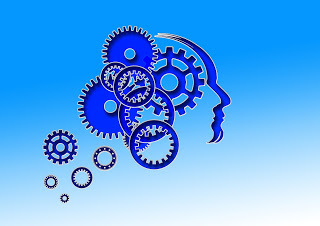 Strategic wisdom: A strategic thinker always “keep the end in mind.” A strategic mind gains the understanding of the past and an understanding of the future so far as information permits, it has the ability to view the whole ecosystem with all its dependencies and interconnectivity. It has the ability to tie all these things together in order to develop actionable plans, and it has the ability to identify key leverage points where the non-proportional impact can be made, and it has the ability to hypothesize interventions and iterate them the right fit is made.
Strategic wisdom: A strategic thinker always “keep the end in mind.” A strategic mind gains the understanding of the past and an understanding of the future so far as information permits, it has the ability to view the whole ecosystem with all its dependencies and interconnectivity. It has the ability to tie all these things together in order to develop actionable plans, and it has the ability to identify key leverage points where the non-proportional impact can be made, and it has the ability to hypothesize interventions and iterate them the right fit is made. “Highing mindset, train for skills.” TO dig into the mindset level, it’s perhaps helpful to break down assessment types such as critical thinking, creativity, cognition, and decision-making bias and capability, motivational drivers, passions, behavioral styles, and patterns, etc. The talent assessment not only measures thinking but teaches the person how to tap into their most powerful and brilliant modes of thinking anytime, anywhere, under any circumstances. The goal is to guide, inspire, and develop people to unleash their full potential and also the collective human potential for the business’s long-term prosperity.Follow us at: @Pearl_Zhu
Published on August 14, 2016 23:22
Three Core Principles in Accelerating Digital Innovation
Innovation comes from the Latin, "Innovare" - It means to change or alter things that already exist.
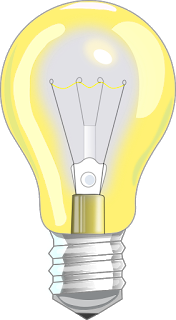 Innovation is the specific phenomenon of the knowledge-based economy. It is about having new knowledge and new processes. It is also about too much knowledge in terms of too many good creative ideas, and too little available resources. Innovation is about prioritization as well - via a systematic discipline that can "smell" the right idea at the right time and place, make it tangible, and achieve its business values.
Innovation is the specific phenomenon of the knowledge-based economy. It is about having new knowledge and new processes. It is also about too much knowledge in terms of too many good creative ideas, and too little available resources. Innovation is about prioritization as well - via a systematic discipline that can "smell" the right idea at the right time and place, make it tangible, and achieve its business values.
Embracing cognitive differences: People consciously or subconsciously protect their status quo. To be truly creative means challenging conventional wisdom and beliefs. It is likely that if you are creative, you will challenge the status quo as you push the parameters of the norms of life. To spark creativity and slow the seeds of innovation, inclusiveness is a necessity. Organizations with a command type of organizational culture indifferent to external innovations and have innovation inertia. How to build a creative team and the associated issues are a matter of the corporate culture building and leadership effectiveness. The team’s creativity is amplified via talented people with the cognitive difference who can understand things from different angles and bring new perspectives to the table. It is also not only a synchronizing of their individual inputs to make something that no one individual would achieve. It is more than that. It has its own dynamic that is in a state of constant flux. Hence, the exercise of blending people's problem-solving abilities to produce the desired outcome is a worthwhile thing to do. Further, most creative working environment and innovative organizations with real teamwork are headed by innovative and strong leaders with original ideas. The spirit comes from the top. Team's creativity are also inspired and motivated by such leaders, who can see, understand and appreciate the merits of different people and true inclusiveness.
Harness Customer Centricity: Innovation is about transforming novel ideas and achieving its business value. Digital is the age of the customer. Customer-centric innovation is one of the focal points for digital organizations to thrive. The purpose of business is to create customers. Customer must be willing to pay for it, be it a product, process or service innovation. It must prove its value in the market. Listen to customers and involve them in the innovation process to gain insight and empathy. When managing innovation life cycle, customer involvement at all stages often elicits highly valuable information. Customers perhaps not always know what they want for the next products or services, but they surely can provide insight into the goals, processes, and their contextual feedback is invaluable. Furthermore, Deep understand of the user through empathetic observation with the innovator using a more inductive approach as to what the customer wants to accomplish “next.” Hence, customers are one of the most important links in the innovation process. And harnessing customer-centricity is one of the core principles for digital innovation management.
 Stay focus via prioritization Setting: Innovation is a disciplined approach to discovering and building opportunities in creating new meaningful sources of value to targeted users. With explosive information and continual digital disruptions, limited resources and fierce competitions, it’s important to build business innovation strength and capabilities via prioritizing resources, managing risks with a portfolio management approach. Building a balanced innovation portfolio is a practical approach for optimizing resource and improving risk intelligence. Innovation is the sustainable and scalable way that can be learned and practiced. Leveraging tailored tools in effective innovation management is important to improve its success rate. The organizations with the healthy innovation appetites, systematic innovation management approach with prioritization mechanism, and tailored innovation next practices will enjoy the balanced innovation portfolio with well mixed radical innovation and incremental innovation projects, to maximize the business value and improve its innovation management success rate.
Stay focus via prioritization Setting: Innovation is a disciplined approach to discovering and building opportunities in creating new meaningful sources of value to targeted users. With explosive information and continual digital disruptions, limited resources and fierce competitions, it’s important to build business innovation strength and capabilities via prioritizing resources, managing risks with a portfolio management approach. Building a balanced innovation portfolio is a practical approach for optimizing resource and improving risk intelligence. Innovation is the sustainable and scalable way that can be learned and practiced. Leveraging tailored tools in effective innovation management is important to improve its success rate. The organizations with the healthy innovation appetites, systematic innovation management approach with prioritization mechanism, and tailored innovation next practices will enjoy the balanced innovation portfolio with well mixed radical innovation and incremental innovation projects, to maximize the business value and improve its innovation management success rate.
At the individual level, people have their own unique ways to spark creativity; at the organizational level, the business’s innovation capability should be built via experimentation and taking systematic approaches. It’s important to set up a team with cognitive differences, and its team members can proactively stimulate the new energy of fresh thinking. Even innovation management processes are systematic, innovation is also an “anti-status quo” flow, the processes shouldn’t be too rigid to stifle innovation, but setting the right priority and laser focus on the most critical things which can make a difference to delight customers and innovate businesses at the dawn of the Digital Era.
Follow us at: @Pearl_Zhu
 Innovation is the specific phenomenon of the knowledge-based economy. It is about having new knowledge and new processes. It is also about too much knowledge in terms of too many good creative ideas, and too little available resources. Innovation is about prioritization as well - via a systematic discipline that can "smell" the right idea at the right time and place, make it tangible, and achieve its business values.
Innovation is the specific phenomenon of the knowledge-based economy. It is about having new knowledge and new processes. It is also about too much knowledge in terms of too many good creative ideas, and too little available resources. Innovation is about prioritization as well - via a systematic discipline that can "smell" the right idea at the right time and place, make it tangible, and achieve its business values.
Embracing cognitive differences: People consciously or subconsciously protect their status quo. To be truly creative means challenging conventional wisdom and beliefs. It is likely that if you are creative, you will challenge the status quo as you push the parameters of the norms of life. To spark creativity and slow the seeds of innovation, inclusiveness is a necessity. Organizations with a command type of organizational culture indifferent to external innovations and have innovation inertia. How to build a creative team and the associated issues are a matter of the corporate culture building and leadership effectiveness. The team’s creativity is amplified via talented people with the cognitive difference who can understand things from different angles and bring new perspectives to the table. It is also not only a synchronizing of their individual inputs to make something that no one individual would achieve. It is more than that. It has its own dynamic that is in a state of constant flux. Hence, the exercise of blending people's problem-solving abilities to produce the desired outcome is a worthwhile thing to do. Further, most creative working environment and innovative organizations with real teamwork are headed by innovative and strong leaders with original ideas. The spirit comes from the top. Team's creativity are also inspired and motivated by such leaders, who can see, understand and appreciate the merits of different people and true inclusiveness.
Harness Customer Centricity: Innovation is about transforming novel ideas and achieving its business value. Digital is the age of the customer. Customer-centric innovation is one of the focal points for digital organizations to thrive. The purpose of business is to create customers. Customer must be willing to pay for it, be it a product, process or service innovation. It must prove its value in the market. Listen to customers and involve them in the innovation process to gain insight and empathy. When managing innovation life cycle, customer involvement at all stages often elicits highly valuable information. Customers perhaps not always know what they want for the next products or services, but they surely can provide insight into the goals, processes, and their contextual feedback is invaluable. Furthermore, Deep understand of the user through empathetic observation with the innovator using a more inductive approach as to what the customer wants to accomplish “next.” Hence, customers are one of the most important links in the innovation process. And harnessing customer-centricity is one of the core principles for digital innovation management.
 Stay focus via prioritization Setting: Innovation is a disciplined approach to discovering and building opportunities in creating new meaningful sources of value to targeted users. With explosive information and continual digital disruptions, limited resources and fierce competitions, it’s important to build business innovation strength and capabilities via prioritizing resources, managing risks with a portfolio management approach. Building a balanced innovation portfolio is a practical approach for optimizing resource and improving risk intelligence. Innovation is the sustainable and scalable way that can be learned and practiced. Leveraging tailored tools in effective innovation management is important to improve its success rate. The organizations with the healthy innovation appetites, systematic innovation management approach with prioritization mechanism, and tailored innovation next practices will enjoy the balanced innovation portfolio with well mixed radical innovation and incremental innovation projects, to maximize the business value and improve its innovation management success rate.
Stay focus via prioritization Setting: Innovation is a disciplined approach to discovering and building opportunities in creating new meaningful sources of value to targeted users. With explosive information and continual digital disruptions, limited resources and fierce competitions, it’s important to build business innovation strength and capabilities via prioritizing resources, managing risks with a portfolio management approach. Building a balanced innovation portfolio is a practical approach for optimizing resource and improving risk intelligence. Innovation is the sustainable and scalable way that can be learned and practiced. Leveraging tailored tools in effective innovation management is important to improve its success rate. The organizations with the healthy innovation appetites, systematic innovation management approach with prioritization mechanism, and tailored innovation next practices will enjoy the balanced innovation portfolio with well mixed radical innovation and incremental innovation projects, to maximize the business value and improve its innovation management success rate.
At the individual level, people have their own unique ways to spark creativity; at the organizational level, the business’s innovation capability should be built via experimentation and taking systematic approaches. It’s important to set up a team with cognitive differences, and its team members can proactively stimulate the new energy of fresh thinking. Even innovation management processes are systematic, innovation is also an “anti-status quo” flow, the processes shouldn’t be too rigid to stifle innovation, but setting the right priority and laser focus on the most critical things which can make a difference to delight customers and innovate businesses at the dawn of the Digital Era.
Follow us at: @Pearl_Zhu
Published on August 14, 2016 23:18
Three Elements in Accelerating Digital Innovation
 Innovation comes from the Latin, "Innovare" - It means 'to change or alter things that already exist. It is the specific phenomenon of the knowledge-based economy. Innovation is about having new knowledge and new processes. It is about too much knowledge in terms of too many good creative ideas, and too little available resources. Innovation is about prioritization - via a systematic discipline that can "smell" the right idea at the right time and place, make it tangible, and achieve its business values.
Innovation comes from the Latin, "Innovare" - It means 'to change or alter things that already exist. It is the specific phenomenon of the knowledge-based economy. Innovation is about having new knowledge and new processes. It is about too much knowledge in terms of too many good creative ideas, and too little available resources. Innovation is about prioritization - via a systematic discipline that can "smell" the right idea at the right time and place, make it tangible, and achieve its business values.
Cognitive differences: People consciously or subconsciously protect their status quo. To be truly creative means challenging conventional wisdom and beliefs. It is likely that if you are creative, you will challenge the status quo as you push the parameters of the norms of life. To spark creativity and slow the seeds of innovation, inclusiveness is a necessity. Organizations with a command type of organizational culture indifferent to external innovations and have innovation inertia. How to build a creative team and the associated issues are a matter of the corporate culture building and leadership effectiveness. The team’s creativity is amplified via talented people with the cognitive difference who can understand things from different angles and bring new perspectives to the table. It is also not only a synchronizing of their individual inputs to make something that no one individual would achieve. It is more than that. It has its own dynamic that is in a state of constant flux. Hence, the exercise of blending people's problem-solving abilities to produce the desired outcome is a worthwhile thing to do. Further, most creative working environment and innovative organizations with real teamwork are headed by innovative and strong leaders with original ideas. The spirit comes from the top. Team's creativity are also inspired and motivated by such leaders, who can see, understand and appreciate the merits of different people and true inclusiveness.
Customer Centricity: Digital is the age of the customer. Customer-centric innovation is one of the focal points for digital organizations to thrive. Innovation is about transforming novel ideas and achieving its business value. Customer must be willing to pay for it, be it a product, process or service innovation. It must prove its value in the market. Listen to customers and involve them in the innovation process to gain insight and empathy. When managing innovation life cycle, customer involvement at all stages often elicits highly valuable information. Customers perhaps not always know what they want for the next products or services, but they surely can provide insight into the goals, processes, and their contextual feedback is invaluable. Furthermore, Deep understand of the user through empathetic observation with the innovator using a more inductive approach as to what the customer wants to accomplish “next.”
 Hence, customers are one of the most important links in the innovation process.
Hence, customers are one of the most important links in the innovation process.
Prioritization Setting: Innovation is a disciplined approach to discovering and building opportunities in creating new meaningful sources of value to targeted users. With explosive information and continual digital disruptions, limited resources and fierce competitions, it’s important to build business innovation strength and capabilities via prioritizing resources, managing risks with a portfolio management approach. Building a balanced innovation portfolio is a practical approach for optimizing resource and improving risk intelligence. Innovation is the sustainable and scalable way that can be learned and practiced. Leveraging tailored tools in effective innovation management is important to improve its success rate. The organizations with the healthy innovation appetites, systematic innovation management approach, and tailored innovation next practices will enjoy the balanced innovation portfolio with well mixed radical innovation and incremental innovation projects, to maximize the business value and improve the innovation management success rate.
At the individual level, people have their own unique ways to spark creativity; at the organizational level, the business’s innovation capability should be built via experimentation and taking systematic approaches. It’s important to set up a team with cognitive differences, and its team members can proactively stimulate the new energy of fresh thinking. Even innovation management processes are systematic, innovation is also an “anti-status quo” flow, the processes shouldn’t be too rigid to stifle innovation, but setting the right priority and laser focus on the most critical things which can make difference and delight customers at the dawn of the Digital Era.
Follow us at: @Pearl_Zhu
Published on August 14, 2016 23:18
August 13, 2016
The Monthly Innovation Brief: Setting Innovation Principles & Guidelines Aug. 2016
 Innovation takes cycle of observing-questioning-connecting-networking-experimenting. From management perspective, innovation is how to transform novel ideas to achieve its business value, due to the hyper-complexity of modern business, innovation is essentially about reducing the unnecessary business complexity to tackle the complexities of business dynamic. Here is a series of blogs to about setting innovation principles and guidelines.
Innovation takes cycle of observing-questioning-connecting-networking-experimenting. From management perspective, innovation is how to transform novel ideas to achieve its business value, due to the hyper-complexity of modern business, innovation is essentially about reducing the unnecessary business complexity to tackle the complexities of business dynamic. Here is a series of blogs to about setting innovation principles and guidelines.
Setting Innovation Principles & Guidelines Three "C' Principles in Building an innovative team There are still full of serendipity in creativity: How many forms of creativity are there? How are they different? How are they similar? Isn't what makes them similar or different, also what makes them creativity? Creativity has many forms and manifestations. Take the standpoint that creativity has its starting point within an individual. Individual creativity is absolutely critical, but how to build a creative team to harness collective creativity?.
Setting Principles to Run an Innovative IT? Creativity is becoming increasingly crucial in today’s business environment because it breeds innovation. But it’s common that many IT companies tend to focus more on their core competencies and often forget about the value of innovation management. Without innovation, organizations would be upstaged by the competitors that are creative because disruptive innovation will happen no matter you prepare well or not. IT needs to become a business’s innovation engine because the intersection of IT and people is where innovation happens. So how to set principles to encourage creativity and run an innovative IT in a systematic way?
How to Build Innovation Strength in your Organization: Digital innovation has a broader spectrum with hybrid nature, it is the incremental improvement- radical innovation continuum. It has broader scope beyond just a new product or service, radical innovation brings something that was not existing before. Incremental Innovation is more about taking something someone created and adding to it, changing it, adapting it; or to leverage the latest technology for business improvement. A fine tuned innovation is not a serendipity, how to build innovation strength in your organization?
Three Aspects in Building Innovation As Business Capability: Innovation becomes simply “creating value by solving problems in a new way.” Today, at the hyperconnected business ecosystem, innovation can happen anywhere, anytime, it expands both horizontally and vertically. There are many ‘flavors’ of innovations: systematic innovation, customer-centric innovation, open innovation, design-driven innovation, or management innovation. It’s the state of mind to think and do things from a new angle, and it’s a critical element of the business strategy and the unique business capability to gain a competitive advantage in the face of fierce competition and business dynamic. So what are further aspects in building innovation as a unique business capability??
 Three Guidelines in Innovation Management: Innovation Management is an important pillar of strategy management. With today's emphasis on innovation per se and its importance to corporate survival, perhaps innovation is so important that the semantic should be recognized as such. So how to identify the gaps and manage it seamlessly?Are there truly bad or wrong ideas? Or merely poorly executed ones? Can we unilaterally pick "winning ideas" or is that subject to interpretation and ultimately implementation/execution? Gaming as it applies to innovation is intriguing -- to truly have the impact it MUST capture both the fuzzy front end and the strategic back end of innovation, what are the further aspects of Innovation Management?
Three Guidelines in Innovation Management: Innovation Management is an important pillar of strategy management. With today's emphasis on innovation per se and its importance to corporate survival, perhaps innovation is so important that the semantic should be recognized as such. So how to identify the gaps and manage it seamlessly?Are there truly bad or wrong ideas? Or merely poorly executed ones? Can we unilaterally pick "winning ideas" or is that subject to interpretation and ultimately implementation/execution? Gaming as it applies to innovation is intriguing -- to truly have the impact it MUST capture both the fuzzy front end and the strategic back end of innovation, what are the further aspects of Innovation Management?
The “Future of CIO” Blog has reached 1.5 million page views with about 30000+ blog posting in 59+ different categories of leadership, management, strategy, digitalization, change/talent, etc. The content richness is not for its own sake, but to convey the vision and share the wisdom. Blogging is not about writing, but about thinking; it’s not just about WHAT to say, but about WHY to say, and HOW to say it. It reflects the color and shade of your thought patterns, and it indicates the peaks and curves of your thinking waves. Unlike pure entertainment, quality and professional content takes time for digesting, contemplation and engaging, and therefore, it takes time to attract the "hungry minds" and the "deep souls." It’s the journey to amplify your voice, deepen your digital footprints, and match your way for human progression.
Follow us at: @Pearl_Zhu
Published on August 13, 2016 23:50
The New Book “Talent Master” Introduction Chapter 1: Digital Fit
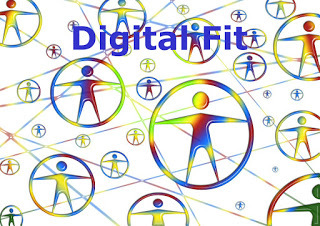 People are always the most invaluable asset in businesses. “Hiring the right people with right capabilities to do right jobs at the right position,” needs to be the mantra for any forward thinking organizations today. However, how would you define the right people, how do you define “Digital Fit”?
People are always the most invaluable asset in businesses. “Hiring the right people with right capabilities to do right jobs at the right position,” needs to be the mantra for any forward thinking organizations today. However, how would you define the right people, how do you define “Digital Fit”?
Digital fit starts with Mind Fit: Where you want to look for “fit,” is in relation to the cognitive intelligence to speed up digital transformation. “Fit” doesn’t mean that everyone needs to have the same thought process, same personalities, same preferences, or same experiences. On the opposite, the beauty is in the color of characters and many shades of creativity. Organizational fit means “incluversity” (Inclusiveness + diversity), not about cooke cutting or hiring colones. Fit or misfit is contextual. Organizations need to be thoughtful about whether you are hiring people who are an obvious “ fit,” and passing on people who are less so, at least on the surface. Mindset, skills, capabilities, and experience diversity are what make effective innovation and growth possible, the “conventional fitness,” makes relationship easier, but perpetuates status quo, and increase “change inertia.” The fitness is all about building a culture of creativity and productivity, and working as a team to reach the ultimate business goals for the long term.
Digital fit profile and portfolio: Your digital footprint becomes more crucial to reflect “who you are,” than your physical activities, because if flows and dynamic, amplifies and transparent, it often reflects your thought processes behind behaviors, your innate strengths and professional brand. Hence, your digital profile needs to have a cohesive consistency with your “true-self,” though it doesn’t mean it should be as tedious as some daily routine. Digital professionals today need to build an enriched digital portfolio via reinvent themselves, continuous building new skills and capabilities, seeking unconventional wisdom, developing the next “digital fitness” practices, etc.
 Digital flexibility: Although the meaning of the word flexibility in general more refers to physical movement capable of being bent without breaking, from management psychological perspective, it’s about the adaptation to changes, the alternative way to do things, and resilience to survive or thrive from the failure. A digital professional with flexibility loves choices, enjoys making differences, feels comfortable to be unique, and welcomes the diversity of thoughts as a fountain of creativity. It’s easy to say you are flexible or playful, and have a lot of creativity, but within the walls of an organization, the overly hierarchical culture stifles innovation. A flexible team setting encourages collaborative thinking, builds adaptability to create mutual interest communities, to identify common, yet flexible process focuses on outcomes without micromanagement, and creates a sense of urgency as well.
Digital flexibility: Although the meaning of the word flexibility in general more refers to physical movement capable of being bent without breaking, from management psychological perspective, it’s about the adaptation to changes, the alternative way to do things, and resilience to survive or thrive from the failure. A digital professional with flexibility loves choices, enjoys making differences, feels comfortable to be unique, and welcomes the diversity of thoughts as a fountain of creativity. It’s easy to say you are flexible or playful, and have a lot of creativity, but within the walls of an organization, the overly hierarchical culture stifles innovation. A flexible team setting encourages collaborative thinking, builds adaptability to create mutual interest communities, to identify common, yet flexible process focuses on outcomes without micromanagement, and creates a sense of urgency as well. From people management perspective, it’s important to measure “Digital Fitness,” via both thinking performance and action performance. The traditional performance management approaches only focus on measuring behaviors and quantitative results, with ignorance of qualitative assessment about crucial traits of digital fitness such as character, indset, talent potential, multidimensional intelligence and culture effect. Ideally, in forward-thinking organizations, the division between “working,” and “thinking,” is replaced by integrating “working and thinking” at both strategic and operational level, where people do the real work by unifying their mind, heart and hands, to build a real engaging, creative, and mature digital workforce. Follow us at: @Pearl_Zhu
Published on August 13, 2016 23:45
"CIO Master" Book Tuning XXXXXXXVI: Three Capabilities to Accelerate IT as Digital Growth Engine
Enterprise IT organizations are likely to be winners on the whole—if IT starts to plan and accelerate the digital transformation.
 Information and technology are pervasive, business transformation or any business initiatives today nearly always involves some form of technology implementation and information-bases insight; IT touches both hard business processes and soft human behaviors. Hence, forward-thinking companies have to empower their ITorganizations to drive digital transformations, which enterprise capabilities should IT build to deal with the emergent digital complexity with the new characteristics such as hyper-connectivity, hyper-density, and hyper-dynamism, and become a growth engine of a high-mature digital business?
Information and technology are pervasive, business transformation or any business initiatives today nearly always involves some form of technology implementation and information-bases insight; IT touches both hard business processes and soft human behaviors. Hence, forward-thinking companies have to empower their ITorganizations to drive digital transformations, which enterprise capabilities should IT build to deal with the emergent digital complexity with the new characteristics such as hyper-connectivity, hyper-density, and hyper-dynamism, and become a growth engine of a high-mature digital business?
Digital Innovation: IT needs to update its mantra from “doing more with less,” to “doing more with innovation.” Because information is the gold mine businesses today need to dig in for discovering the new growth opportunity, and technology is the disruptive force behind the digital transformation. IT enables business innovation creates value propositions that would move your prospects to become your clients; more importantly, to improve customer retention. IT shifts to be more “I” focus: Innovation, Information, Intelligence, Integration, Improvement, Interface, there are numerous perceptions of IT guiding business towards the right direction and to deliver innovative services / solutions for either delighting customers or exploring new opportunities, with the goal to run a high innovative and high-competitive digital business.
Digital Intelligence: IT provides a nervous system to the business. Business needs IT to provide better quality and real-time information to achieve improved profitability. If intelligence built is poor or not managed in a proper way, it may lead to wrong decisions and hence impact on the business. But if IT can capture insight/foresight, the business would prosper and grow. It totally depends on a deep understanding of the business and implementing it using IT tools and techniques. It could mean providing data which will help dissect the trends and help business create more products, services, solutions, and ultimately provide insight which will help measure the value-add of what is delivered as a product or service so quick adjustments can be made to keep profits coming. One of the most important goals for running a digital IT is to deliver precise, authentic and on-time information to the business for making right decisions at the right time to make efficient use of all other resources, and hence running a high-intelligent and high effective digital organization.
 Digital Agility: Agility is an enterprise “changeability.” Agility is not only the ability to create the change, but also the capability to adapt to the changes. Agility within and of itself is a strategy. Business expects IT to figure out ways to make the business agiler. IT is only increasing in importance and relevance with each passing day. Within an IT, organizational agility should be defined as the speed in which the organization can enable the enterprise's goals and objectives. It allows the CIO to consider ways to drive more ROI, integrate services and any number of additional IT value-added components which can be provided. Digital agility means that the business is able to efficiently utilize limited capital for bringing more products & services to the market at a faster speed, that could mean IT enabled digital agility to create efficiencies in the processes so business can compete with the competition in terms of offering products and services for customer retention faster than competitors.
Digital Agility: Agility is an enterprise “changeability.” Agility is not only the ability to create the change, but also the capability to adapt to the changes. Agility within and of itself is a strategy. Business expects IT to figure out ways to make the business agiler. IT is only increasing in importance and relevance with each passing day. Within an IT, organizational agility should be defined as the speed in which the organization can enable the enterprise's goals and objectives. It allows the CIO to consider ways to drive more ROI, integrate services and any number of additional IT value-added components which can be provided. Digital agility means that the business is able to efficiently utilize limited capital for bringing more products & services to the market at a faster speed, that could mean IT enabled digital agility to create efficiencies in the processes so business can compete with the competition in terms of offering products and services for customer retention faster than competitors.
Enterprise IT organizations are likely to be winners on the whole—if IT starts to plan and accelerate the digital transformation. Because the importance of IT to the enterprise will increase, as the depth of their relationships with users throughout the enterprise, and its unique position to oversee processes. Running IT as the business’s growth engine, along with an effective strategy, and measurable execution will achieve a high-performance result and improve organizational competency.
CIO Master Order Link on Amazon CIO Master Ordre Link on Barner & Noble CIO Master Order Link On IBooks “CIO Master” Book Preview Quote Collection III “CIO Master” Book Preview Quote Collection II “CIO Master” Book Preview Quote Collection I, Slideshare Presentation “CIO Master” Book Preview Conclusion Running IT as Digital Transformer “CIO Master” Book Preview: Chapter 9 IT Agility “CIO Master” Book Preview: Chapter 8 Three "P"s in Running Digital IT “CIO Master” Book Preview: Chapter 7 IT Innovation Management “CIO Master” Book Preview: Chapter 6 Digital Strategy-Execution Continuum "CIO Master” Book Preview: Chapter 5 Thirteen Digital Flavored IT “CIO Master” Book Preview: Chapter 4 CIO as Talent Master Introduction “CIO Master” Book Preview: Chapter 3 “CIOs as Change Agent” Introduction “CIO Master” Book Preview: Chapter 2 “CIOs as Digital Visionary” Introduction “CIO Master” Book Preview: Chapter 1 “Twelve Digital CIO Personas” Introduction "CIO Master - Unleash the Digital Potential of IT" Introduction "CIO Master - Unleash the Digital Potential of IT" Book Preview
Follow us at: @Pearl_Zhu
 Information and technology are pervasive, business transformation or any business initiatives today nearly always involves some form of technology implementation and information-bases insight; IT touches both hard business processes and soft human behaviors. Hence, forward-thinking companies have to empower their ITorganizations to drive digital transformations, which enterprise capabilities should IT build to deal with the emergent digital complexity with the new characteristics such as hyper-connectivity, hyper-density, and hyper-dynamism, and become a growth engine of a high-mature digital business?
Information and technology are pervasive, business transformation or any business initiatives today nearly always involves some form of technology implementation and information-bases insight; IT touches both hard business processes and soft human behaviors. Hence, forward-thinking companies have to empower their ITorganizations to drive digital transformations, which enterprise capabilities should IT build to deal with the emergent digital complexity with the new characteristics such as hyper-connectivity, hyper-density, and hyper-dynamism, and become a growth engine of a high-mature digital business?
Digital Innovation: IT needs to update its mantra from “doing more with less,” to “doing more with innovation.” Because information is the gold mine businesses today need to dig in for discovering the new growth opportunity, and technology is the disruptive force behind the digital transformation. IT enables business innovation creates value propositions that would move your prospects to become your clients; more importantly, to improve customer retention. IT shifts to be more “I” focus: Innovation, Information, Intelligence, Integration, Improvement, Interface, there are numerous perceptions of IT guiding business towards the right direction and to deliver innovative services / solutions for either delighting customers or exploring new opportunities, with the goal to run a high innovative and high-competitive digital business.
Digital Intelligence: IT provides a nervous system to the business. Business needs IT to provide better quality and real-time information to achieve improved profitability. If intelligence built is poor or not managed in a proper way, it may lead to wrong decisions and hence impact on the business. But if IT can capture insight/foresight, the business would prosper and grow. It totally depends on a deep understanding of the business and implementing it using IT tools and techniques. It could mean providing data which will help dissect the trends and help business create more products, services, solutions, and ultimately provide insight which will help measure the value-add of what is delivered as a product or service so quick adjustments can be made to keep profits coming. One of the most important goals for running a digital IT is to deliver precise, authentic and on-time information to the business for making right decisions at the right time to make efficient use of all other resources, and hence running a high-intelligent and high effective digital organization.
 Digital Agility: Agility is an enterprise “changeability.” Agility is not only the ability to create the change, but also the capability to adapt to the changes. Agility within and of itself is a strategy. Business expects IT to figure out ways to make the business agiler. IT is only increasing in importance and relevance with each passing day. Within an IT, organizational agility should be defined as the speed in which the organization can enable the enterprise's goals and objectives. It allows the CIO to consider ways to drive more ROI, integrate services and any number of additional IT value-added components which can be provided. Digital agility means that the business is able to efficiently utilize limited capital for bringing more products & services to the market at a faster speed, that could mean IT enabled digital agility to create efficiencies in the processes so business can compete with the competition in terms of offering products and services for customer retention faster than competitors.
Digital Agility: Agility is an enterprise “changeability.” Agility is not only the ability to create the change, but also the capability to adapt to the changes. Agility within and of itself is a strategy. Business expects IT to figure out ways to make the business agiler. IT is only increasing in importance and relevance with each passing day. Within an IT, organizational agility should be defined as the speed in which the organization can enable the enterprise's goals and objectives. It allows the CIO to consider ways to drive more ROI, integrate services and any number of additional IT value-added components which can be provided. Digital agility means that the business is able to efficiently utilize limited capital for bringing more products & services to the market at a faster speed, that could mean IT enabled digital agility to create efficiencies in the processes so business can compete with the competition in terms of offering products and services for customer retention faster than competitors.
Enterprise IT organizations are likely to be winners on the whole—if IT starts to plan and accelerate the digital transformation. Because the importance of IT to the enterprise will increase, as the depth of their relationships with users throughout the enterprise, and its unique position to oversee processes. Running IT as the business’s growth engine, along with an effective strategy, and measurable execution will achieve a high-performance result and improve organizational competency.
CIO Master Order Link on Amazon CIO Master Ordre Link on Barner & Noble CIO Master Order Link On IBooks “CIO Master” Book Preview Quote Collection III “CIO Master” Book Preview Quote Collection II “CIO Master” Book Preview Quote Collection I, Slideshare Presentation “CIO Master” Book Preview Conclusion Running IT as Digital Transformer “CIO Master” Book Preview: Chapter 9 IT Agility “CIO Master” Book Preview: Chapter 8 Three "P"s in Running Digital IT “CIO Master” Book Preview: Chapter 7 IT Innovation Management “CIO Master” Book Preview: Chapter 6 Digital Strategy-Execution Continuum "CIO Master” Book Preview: Chapter 5 Thirteen Digital Flavored IT “CIO Master” Book Preview: Chapter 4 CIO as Talent Master Introduction “CIO Master” Book Preview: Chapter 3 “CIOs as Change Agent” Introduction “CIO Master” Book Preview: Chapter 2 “CIOs as Digital Visionary” Introduction “CIO Master” Book Preview: Chapter 1 “Twelve Digital CIO Personas” Introduction "CIO Master - Unleash the Digital Potential of IT" Introduction "CIO Master - Unleash the Digital Potential of IT" Book Preview
Follow us at: @Pearl_Zhu
Published on August 13, 2016 23:42
Three Capabilities to Accelerate IT as Digital Growth Engine
 Information and technology are pervasive, business transformation or any business initiatives today nearly always involves some form of technology implementation and information-bases insight; IT touches both hard business processes and soft human behaviors. Hence, forward-thinking companies empower their IT organizations to drive digital transformations, which enterprise capabilities should IT build to deal with the emergent digital complexity with the new characteristics such as hyper-connectivity, hyper-density and hyper-dynamism, and become a growth engine of digital business?
Information and technology are pervasive, business transformation or any business initiatives today nearly always involves some form of technology implementation and information-bases insight; IT touches both hard business processes and soft human behaviors. Hence, forward-thinking companies empower their IT organizations to drive digital transformations, which enterprise capabilities should IT build to deal with the emergent digital complexity with the new characteristics such as hyper-connectivity, hyper-density and hyper-dynamism, and become a growth engine of digital business?
Digital Innovation: IT needs to update its mantra from “doing more with less,” to “doing more with innovation.” Because information is the gold mine businesses need to dig in for discovering the new growth opportunity, and technology is the disruptive force behind digital transformation. IT enables business innovation to create a value proposition that would move your prospects to become your clients; more importantly, to improve customer retention. IT shifts to be more “I” focus: Innovation, Information, Intelligence, Integration, Improvement, Interface, the numerous perceptions of IT guiding business towards the right direction and to deliver innovative services / solutions for either delighting customers or exploring new opportunities, with the goal to run an high innovative and high-competitive digital business.
Digital Intelligence: IT provides a nervous system to the business. Business needs IT to provide better quality and real time information to achieve improved profitability. If intelligence built is poor or not managed in a proper way, it may lead to wrong decisions and hence impact on the business. But if IT can capture insight/foresight, the business would prosper and grow. It totally depends on a deep understanding of the business and implementing it using IT tools and techniques. It could mean providing data which will help dissect the trends and help business create more products, services, solutions, and ultimately provide insight which will help measure the value-add of what is delivered as a product or service so quick adjustments can be made to keep profits coming. One of the most important goal for running a digital IT is to deliver precise, authentic and on-time information to business for making right decisions at right time to make efficient use of all other resources, and hence running a high-intelligent and high effective digital organization.
 Digital Agility: Agility is an enterprise “changeability.” Agility is not only the ability to create the change, but also the capability to adapt to the changes. Agility within and of itself is a strategy. Business expects IT to figure out ways to make the business agiler. IT is only increasing in importance and relevance with each passing day. Within an IT, organizational agility should be defined as the speed in which the organization can enable the enterprise's goals and objectives. It allows the CIO to consider ways to drive more ROI, integrate services and any number of additional IT value-added components which can be provided. Digital agility means that the business is able to efficiently utilize limited capital for bringing more products & services to the market at faster speed, that could mean IT enabled digital agility create efficiencies in the processes so business can compete with the competition in terms of offering products and services for customer retention faster than competitors.
Digital Agility: Agility is an enterprise “changeability.” Agility is not only the ability to create the change, but also the capability to adapt to the changes. Agility within and of itself is a strategy. Business expects IT to figure out ways to make the business agiler. IT is only increasing in importance and relevance with each passing day. Within an IT, organizational agility should be defined as the speed in which the organization can enable the enterprise's goals and objectives. It allows the CIO to consider ways to drive more ROI, integrate services and any number of additional IT value-added components which can be provided. Digital agility means that the business is able to efficiently utilize limited capital for bringing more products & services to the market at faster speed, that could mean IT enabled digital agility create efficiencies in the processes so business can compete with the competition in terms of offering products and services for customer retention faster than competitors.
Enterprise IT organizations are likely to be winners on the whole—if IT start to plan and accelerate the digital transformation. Because the importance of IT to the enterprise will increase, as the depth of their relationships with users throughout the enterprise, and its unique position to oversee processes. Running IT as the business’s growth engine, along with an effective strategy, and measurable execution will achieve high-performance result and improve organizational competency.
Follow us at: @Pearl_Zhu
Published on August 13, 2016 23:42
August 12, 2016
The New Book “Talent Maser- 199 Questions to See Through Talent from Different Angles” Introduction
Being a digital professional inherently and inextricably links with high levels of “professionalism.”
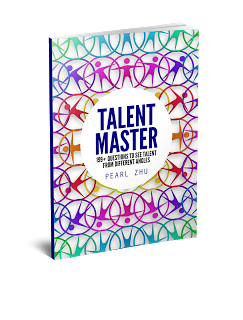 We live in the dawn of the Digital Era with increasing speed of changes and overwhelming information flow, the knowledge cycle is significantly shortened, and there are huge skill gaps in the workplace as well. Growth mindsets, new skills, and digital capabilities are needed every day. So who are digital leaders and professionals today, how shall you define digital professionalism, leadership competency, how can you identify talent gaps and different great talent from mediocre, and what are fresh perspectives of digital professional quality?
We live in the dawn of the Digital Era with increasing speed of changes and overwhelming information flow, the knowledge cycle is significantly shortened, and there are huge skill gaps in the workplace as well. Growth mindsets, new skills, and digital capabilities are needed every day. So who are digital leaders and professionals today, how shall you define digital professionalism, leadership competency, how can you identify talent gaps and different great talent from mediocre, and what are fresh perspectives of digital professional quality?
“Talent Master” is the guidebook to help digital professional shape digital fit mindset, enforce multi-dimensional digital intelligence, build a unique set of digital capabilities and skills, also shape multifaceted digital professionalism. It is also a playbook to help top digital leaders and talent managers set updated digital principles and high standards to identify skills gap, recognize high performers and high potentials, and innovate talent management practices.
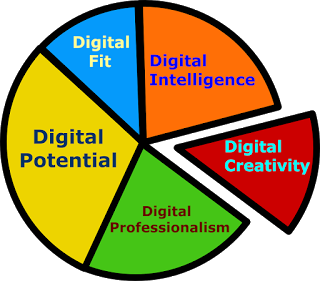 Chapter 1 Digital Fit: “Digital fit” should be first defined as “mind fit.” The right mindset is an utmost quality for being a right fit because the power of the mind is the force to change the business or even the world for better, and then following with attitude fit and behavior fit. Digital contemporary fitness requires envisioning new perspectives, shaping new boxes of thinking, and building new competency.
Chapter 1 Digital Fit: “Digital fit” should be first defined as “mind fit.” The right mindset is an utmost quality for being a right fit because the power of the mind is the force to change the business or even the world for better, and then following with attitude fit and behavior fit. Digital contemporary fitness requires envisioning new perspectives, shaping new boxes of thinking, and building new competency.
Chapter 2 Digital Intelligence: Intelligence has been defined in many different ways such as in terms of one's capacity for logic, abstract thought, understanding, self-awareness, communication, learning, emotional knowledge, memory, planning, creativity and problem solving. Whether someone is "intelligent" or not depends entirely on what you are asking them to accomplish with their brain. Digital intelligence is multidimensional and contextual, with ultimate goals to gain wisdom.
Chapter 3 Digital Creativity: Creativity is the high level of intelligence. Creativity is expressive, productive, inventive, innovative and emergent. The innovators with digital creativity are simply those who can see what's around, and easily and effortlessly discover a better way to do things. Creativity is a synthesis of two qualities: imagination with which you create new ideas and the concreteness with which you can transform ideas into real work.
Chapter 4 Digital Professionalism: The online dictionary defines “professionalism is the skill, good judgment, and polite behavior that is expected from a person who is trained to do a job well.” Hence, it doesn’t mean if you had a profession, you would be automatically a well-respected professional with professionalism. High professionalism is a mindset, principle, and discipline.
Chapter 5 Digital Potential: Potential is about future performance, not past performance. How well do individuals continue to perform and grow in their current roles, how likely can they take on new challenges at work, rapidly learn and grow into next-level roles, or roles that are expanded and redefined as the business changes? Individuals showing potential are distinguished usually by their mastery of new roles quickly and effectively, learning more rapidly than their peers, more innovate in problem-solving. Either at individual or business level, performance helps you motivated and keeps your business running, churning numbers etc, whereas potential can leap digital professionals or businesses to the next level.
A digital professional presents high mature professionalism which means: the mastery of digital capabilities, sound judgments via independent thinking, positive attitudes to fighting unprofessionalism, humilities to the things they don't know, and polite behaviors to act cohesively.
"Talent Master" B&N Order Link Follow us at: @Pearl_Zhu
 We live in the dawn of the Digital Era with increasing speed of changes and overwhelming information flow, the knowledge cycle is significantly shortened, and there are huge skill gaps in the workplace as well. Growth mindsets, new skills, and digital capabilities are needed every day. So who are digital leaders and professionals today, how shall you define digital professionalism, leadership competency, how can you identify talent gaps and different great talent from mediocre, and what are fresh perspectives of digital professional quality?
We live in the dawn of the Digital Era with increasing speed of changes and overwhelming information flow, the knowledge cycle is significantly shortened, and there are huge skill gaps in the workplace as well. Growth mindsets, new skills, and digital capabilities are needed every day. So who are digital leaders and professionals today, how shall you define digital professionalism, leadership competency, how can you identify talent gaps and different great talent from mediocre, and what are fresh perspectives of digital professional quality?“Talent Master” is the guidebook to help digital professional shape digital fit mindset, enforce multi-dimensional digital intelligence, build a unique set of digital capabilities and skills, also shape multifaceted digital professionalism. It is also a playbook to help top digital leaders and talent managers set updated digital principles and high standards to identify skills gap, recognize high performers and high potentials, and innovate talent management practices.
 Chapter 1 Digital Fit: “Digital fit” should be first defined as “mind fit.” The right mindset is an utmost quality for being a right fit because the power of the mind is the force to change the business or even the world for better, and then following with attitude fit and behavior fit. Digital contemporary fitness requires envisioning new perspectives, shaping new boxes of thinking, and building new competency.
Chapter 1 Digital Fit: “Digital fit” should be first defined as “mind fit.” The right mindset is an utmost quality for being a right fit because the power of the mind is the force to change the business or even the world for better, and then following with attitude fit and behavior fit. Digital contemporary fitness requires envisioning new perspectives, shaping new boxes of thinking, and building new competency.
Chapter 2 Digital Intelligence: Intelligence has been defined in many different ways such as in terms of one's capacity for logic, abstract thought, understanding, self-awareness, communication, learning, emotional knowledge, memory, planning, creativity and problem solving. Whether someone is "intelligent" or not depends entirely on what you are asking them to accomplish with their brain. Digital intelligence is multidimensional and contextual, with ultimate goals to gain wisdom.
Chapter 3 Digital Creativity: Creativity is the high level of intelligence. Creativity is expressive, productive, inventive, innovative and emergent. The innovators with digital creativity are simply those who can see what's around, and easily and effortlessly discover a better way to do things. Creativity is a synthesis of two qualities: imagination with which you create new ideas and the concreteness with which you can transform ideas into real work.
Chapter 4 Digital Professionalism: The online dictionary defines “professionalism is the skill, good judgment, and polite behavior that is expected from a person who is trained to do a job well.” Hence, it doesn’t mean if you had a profession, you would be automatically a well-respected professional with professionalism. High professionalism is a mindset, principle, and discipline.
Chapter 5 Digital Potential: Potential is about future performance, not past performance. How well do individuals continue to perform and grow in their current roles, how likely can they take on new challenges at work, rapidly learn and grow into next-level roles, or roles that are expanded and redefined as the business changes? Individuals showing potential are distinguished usually by their mastery of new roles quickly and effectively, learning more rapidly than their peers, more innovate in problem-solving. Either at individual or business level, performance helps you motivated and keeps your business running, churning numbers etc, whereas potential can leap digital professionals or businesses to the next level.
A digital professional presents high mature professionalism which means: the mastery of digital capabilities, sound judgments via independent thinking, positive attitudes to fighting unprofessionalism, humilities to the things they don't know, and polite behaviors to act cohesively.
"Talent Master" B&N Order Link Follow us at: @Pearl_Zhu
Published on August 12, 2016 23:27



